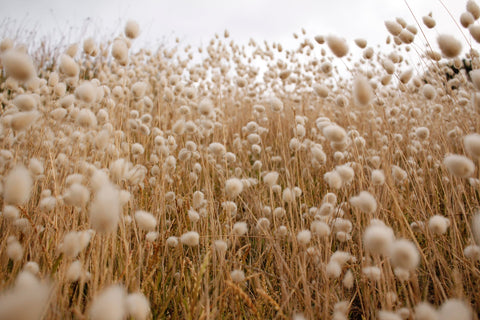
Clothing has long been made with cotton. In the recent years Organic Cotton Clothing as emerged as a way to wear natural clothing and Eco Fashion without all the chemicals added. Organic cotton is used in all areas of natural apparel.
Cotton has been grown for centuries throughout the world. It has been dated to being used all the way back into prehistoric times. Cotton is a shrub that grows naturally in tropical climates. It is most prevalent in Americas, Africa and India. The fibre is nearly pure cellulose. Its is generally spun into yarn or thread and woven/knitted into clothing. In the last 100 years chemical fertilizers and pesticides have been used in great amounts to grow conventional cotton. Organic Cotton Clothing is made from Cotton grown with out chemicals or Genetically Modified plants. The World Trade Organization estimates that 25 million tonnes of cotton is produced annually. Cotton growth uses 2.5% of the worlds arable land. China is the largest producer of Cotton. Cotton is widely considered a Natural Fibre for making clothing but high contents of chemicals in the growing process has made the need for Organically Grown Cotton Clothing prevalent.

Organically grown Cotton clothing is considered a more eco friendly and Sustainable option to conventional cotton. Each T-shirt made with 100% organic cotton saves 1/3 a pound of synthetic fertilizers and farm chemicals from entering the ecosystems. By ecosystems I mean the water you drink, the surf you surf and all the life you see outside your window. Cotton is also used as a food for cattle (the seed and fibre) and cottonseed oil is an ingredient in many processed foods. But because it attracts weeds and pests and is not considered a food in regular terms farmers load it up with toxic chemicals. Cotton is one of the most grown crops in the world so the effects from this are significant.
Conventionally grown cotton accounts for 2.5% of the farmland world wide. It is responsible for 10% of the worlds pesticide use and 25% of the worlds insecticide use. The crops are sprayed from above affecting near by streams, farm houses and people. In contrast organic cotton uses beneficial bugs and manure in place of the chemicals. Organic Cotton also uses crop rotation methods, hand-weeding and cover crops as methods to ensure good crops. To use a field as organic the field must be free of chemical for 3 years. The cotton is processed according to acceptable standards.
Organic cotton can be blended with other sustainably produced fibres like viscose from bamboo, soy and hemp to make clothing. When organic cotton is blended with these fabrics it creates fabrics that have the properties of both fabrics and the added sustainable impact of using organically grown cotton for clothes. Bamboo organic cotton clothing has a soft hand and feels fresh on the skin. It has a cool texture that keeps the body more comfortable. The weight and drape of bamboo and organic cotton blend fabrics are perfect for eco-fashion clothing and organic yoga clothing. Hemp clothing is one of the most eco friendly clothing choices you can make. When blended with organic cotton is is sustainable with the warmth of hemp and the breathability of organic cotton. Soy is a fibre made from the by product of the soybean industry. It is smooth and soft as well as bamboo but also has a warmer weight to it.
Choosing organic cotton clothing is not difficult. Many independent designers and clothing lines as well as major brands are now offering organic cotton as a choice in their fashions. You won’t have to look far to find a company that believes in the environmentally friendly future of non toxic certified organic cotton.
-Jennifer
Designer, advocate, lover of Organics at Salts Clothing

